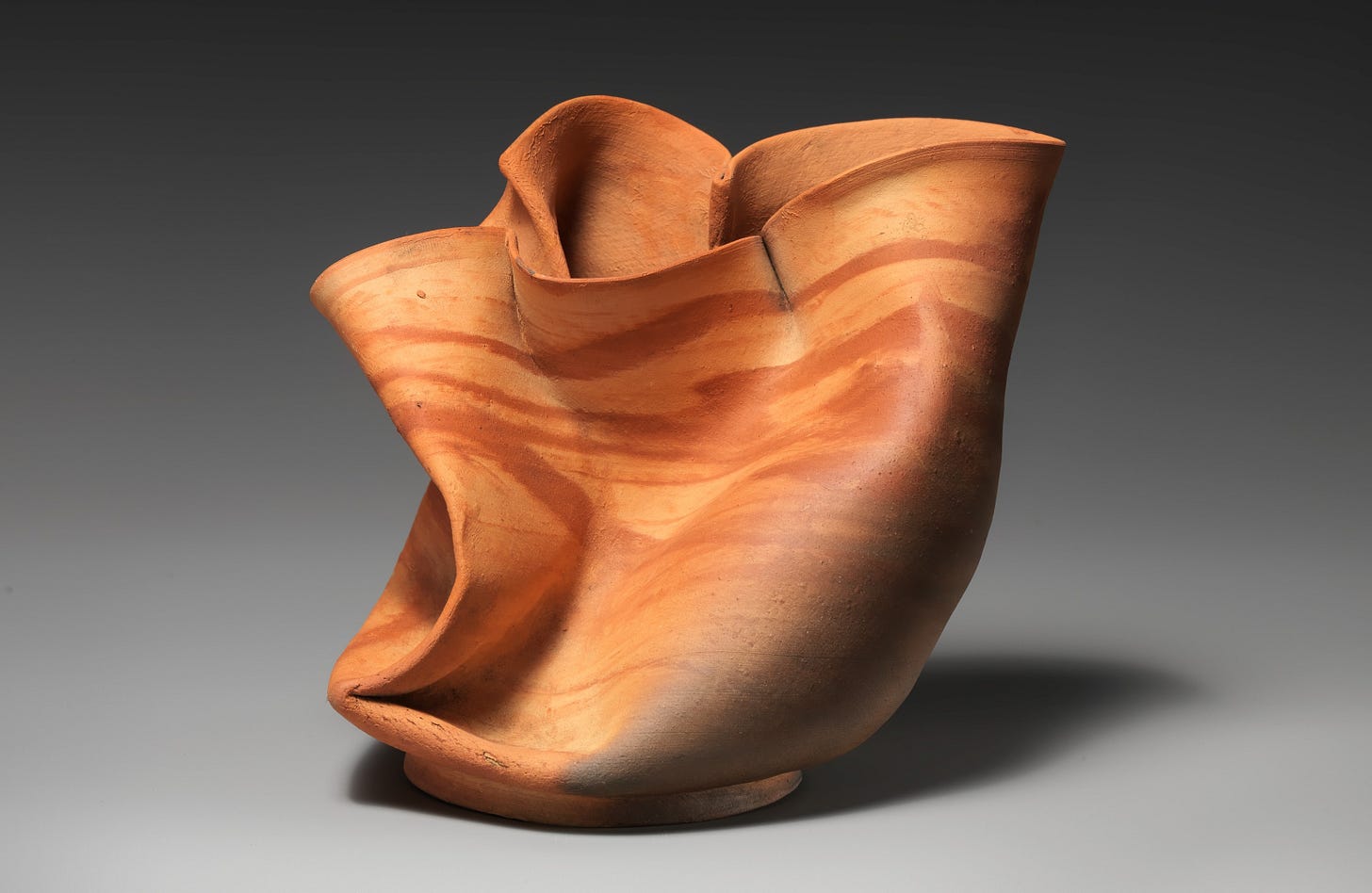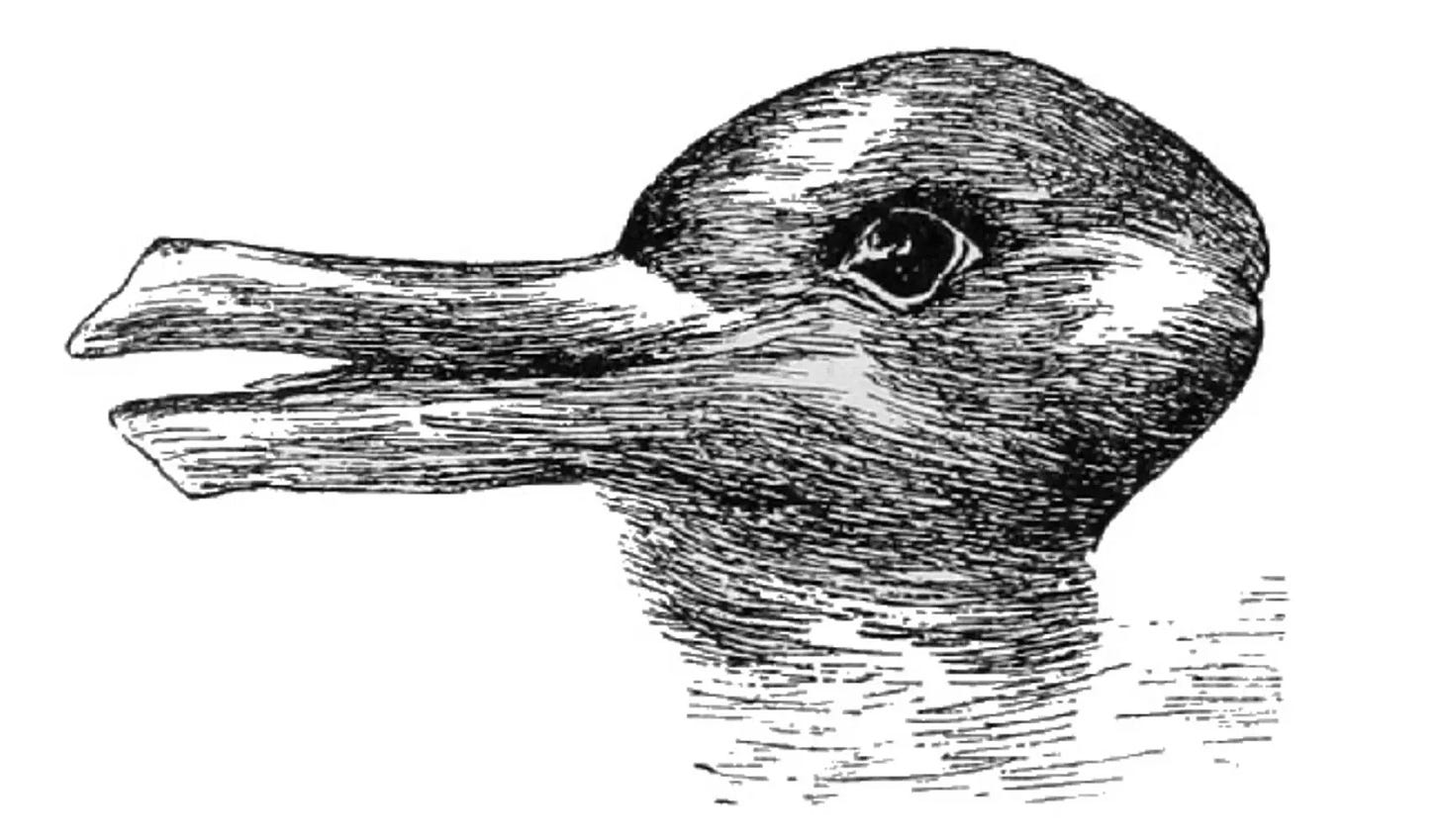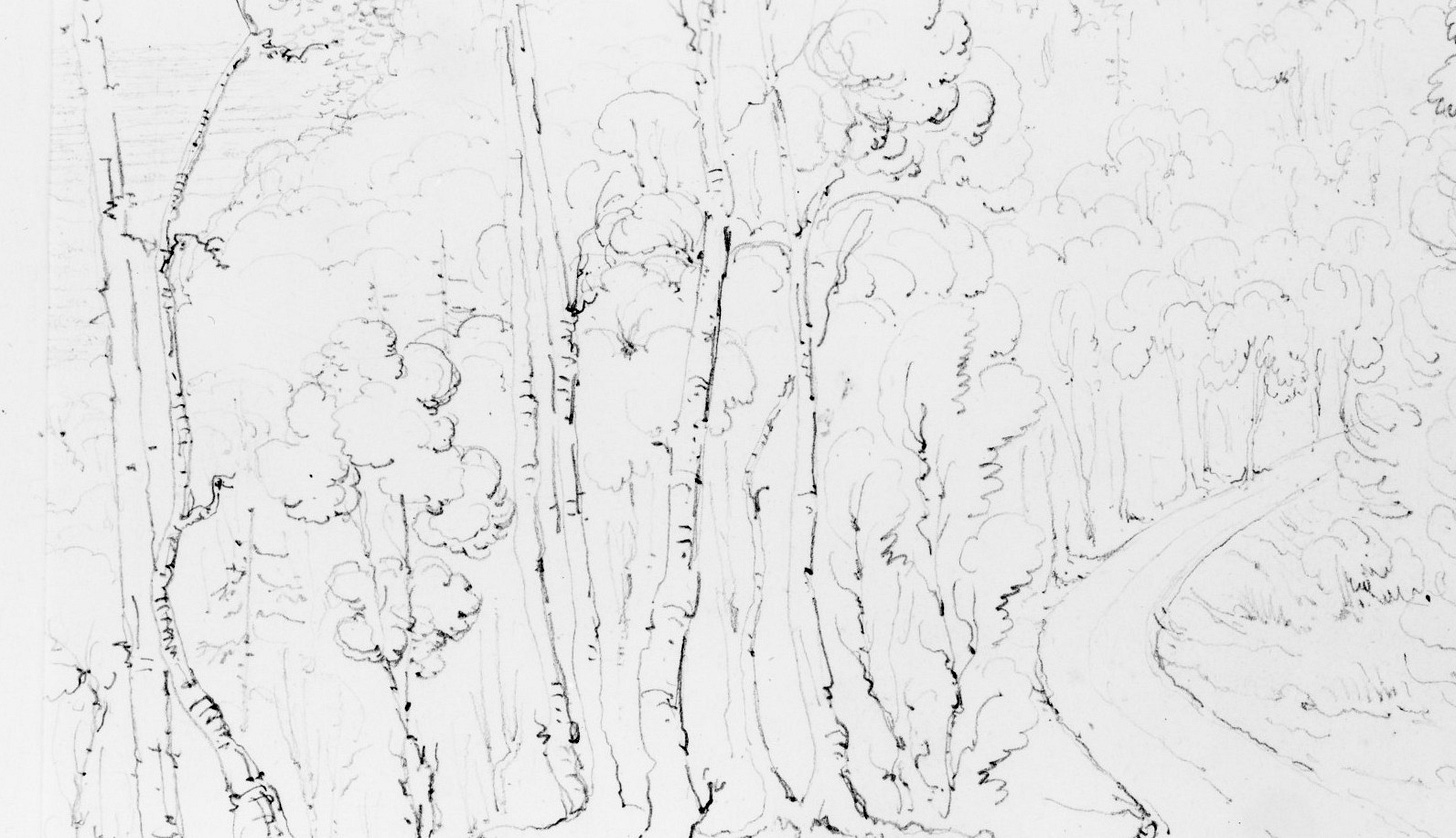Constellation Thinking
Why Holding Paradox Is More Serious Than We Thought
Right now, there’s a sleight of hand unconsciously underway that’s eroding meaning without us noticing. It takes all sorts of forms.
One way it happens is that someone violates an unspoken norm that matters deeply to us. Life continues anyway. In spite of ourselves, and often under the radar of conscious thought, there’s a kind of attrition. How can the world just keep going after this was done? After this was said?
And yet it does, and so we think, though often not explicitly: “Maybe it wasn’t so bad after all” or “maybe it meant something different” or “maybe I’ve been wrong to be so nice” or “maybe this is just how the world works.”
Weirdly, this can be exciting.
Such transgression and subversion, especially when unthought, shows us how much more is possible. All we assumed begins to crack. People get swept up talking about it, and that widespread attention makes it seem like it’s okay, even as it hurts and undermines us. We know it’s not okay. We say it’s not okay. And yet, somehow it still seems to be taken as if it is okay.
Recently, this has been confusing and diffusing what matters most, our power to care.
One way to realize this differently is through holding paradox, turning our eyes from the cracks to the light flooding through those fissures. If there were too many cracks, we would fall into that light and no longer know it (just as we’d no longer know the sun if we fell into it). But cracks can also bring light for new focus, warmth to find and feel so as to build better foundations.
Many of the painful statements and actions that are part of ‘the trick of continuance’ discussed below only happen when a person is 100% sure they are right, or at least when they want to be 100% right, and think saying it enough will make it so. Since more and more often the world seems to demand and reward this, it’s pretty common now.
In contrast to such surety, the idea of ‘holding paradox’ can seem passive, peaceful, wishy-washy.
It’s not.
Holding paradox is the portal into constellation thinking, a way of seeing reality in all its fractal, multi-layered, thrilling, messiness. It’s feeling and being the light without dissolving into it. This is the challenge of our times.
Balancing the light with the fractures of our landscape keeps us from going numb. We feel here, now, alive. In this world. In these challenges.
The excitement or jolt that comes when norms are transgressed is the excitement of realizing that there can always be another turn of the kaleidoscope.
It can be easy to confuse that feeling with what happened to cause it.
Sometimes cracks show us this love exists. Other times, they’re just cracks. To confuse a harmful statement or action (which might make a crack) with the feeling that ‘another angle is possible’ (the light) has become easier in a world too focused on temporary hits, where stimulus and response are harder to distinguish from their resources.
Untangling this and getting clear on its nuance holds real power & opportunity.
It’s also where love lives.
Constellation Thinking
Many of us have been developing a framework for understanding how we create meaning while holding and dancing through multiple perspectives simultaneously. A couple years back, I started discussing it as kaleidoscopic cognition. More recently, I’ve been using terms like constellation thinking or kaleidoscopic thinking, trying to find ways to make clear exactly what I am talking about, which has not been easy, though I continue to try.
Luckily, as it turns out, others have stumbled upon this same metaphor towards something similar.
The first time it seems to appear in a scholarly publication is in 1986 when Harvard professor Rosabeth Moss Kanter writes:
“Creativity is a lot like looking at the world through a kaleidoscope. You look at a set of elements, the same ones everyone else sees, but then reassemble those floating bits and pieces into an enticing new possibility.”
(A few years later, she wrote a book chapter about this titled Kaleidoscopic Thinking. Full reference is below).
To begin to feel the powers of this requires holding paradox.
Holding Paradox
Our discussions in the
project often dance with the idea of holding paradox and there are lists of references on our websites about ways many folks have been doing this via many routes. A big part of it is about noticing and tending rather than solving. It’s about exploring what holds polarities rather than trying to make one side into the other one or find the winner.Still, when people hear about ‘holding the tension’ or ‘holding paradox,’ it can feel soft and sentimental. They might think it means something passive or peaceful and not stay with it long enough to feel into the challenge, difficulty and stakes.
Taking the time to feel into that is to discover something precious. Because holding paradox isn’t just a nice philosophical idea, it’s also what Parker Palmer calls a survival concept. It gives us a minute to breath and open to another sort of movement.
Right now, there’s some undercurrent that exploits our inability (or inattention) to step behind the waterfall, one that’s eroding our values and agency in ways we don’t even notice. It’s happening on a large scale, spurred on by algorithmic spread. But it’s also a sign that we are on the brink of something, if we notice it. We can shift this.
The Trick of Continuance
This ‘trick’ (which is often less like a trick and more like a blind spot) often happens just under our conscious radar. Someone starts saying and acting in ways we feel are hurtful, cruel or wrong. They get a lot of attention, precisely because they are doing something that disrupts the norm, that shows us things were not so solid as we thought.
Whether they really are right or really are wrong is not the point, the point is that we begin to doubt our own path and story as we compare them. Or we start to think ‘everything is relative’ in the sense that anything goes, which is not so.
Sometimes people do this out of an authentic feeling and motivation, but today the ‘trick’ has also become a ploy that is spurred on by many of the ways we communicate. In an algorithmic world, the more disruptive one is, the more attention they often get.
The trick is that many of us are assuming (without quite knowing it) that those with attention are ‘winning’. And the more attention they get—even the kind that is negative—the more this system algorithmically legitimizes the trend that says ‘win’, which is really something inverted.
In other words, it makes it seem normal to be disruptive, which makes everything feel and seem rather meaningless, which can make the worst look like a ‘win’.
Once you realize this, it can be really hard to scroll through social media Apps. You look at all the TikTok bling and YouTube thumbnails doing the same sorts of things to get the same sort of attention and it feels better to turn it off and go for a walk.
Or: you start to feel desperate, like you too have to play this game because ‘that’s just how the world is.’ That last bit is the trick. And it often happens without us noticing we are feeling it.
Because the world continues even though this is happening, we stop trusting our gut and we start to have unthought senses of ‘oh well they must not be so bad’ or ‘well maybe I just have to act like that because that’s how it works’ which then perpetuates the whole numbing exercise of the algorithmic win that is no win at all in real life, and never feels like one if we’re honest about it.
Because when we let go of our stance, of believing in something because we care and because it gives us meaning that we want to share, we close the portal into the feeling we all crave which is really at the heart of all the stuff we do and make. It’s also our only real agency in life. So yeah, things start to feel meaningless. Precisely because they are not.
We can shift this.
Life continuing—that simple fact of continuance—might (if you haven’t noticed and started to hold the paradox) make you feel like its a kind of false proof that we were wrong to care so deeply. In fact, care is beckoning to us in new ways.
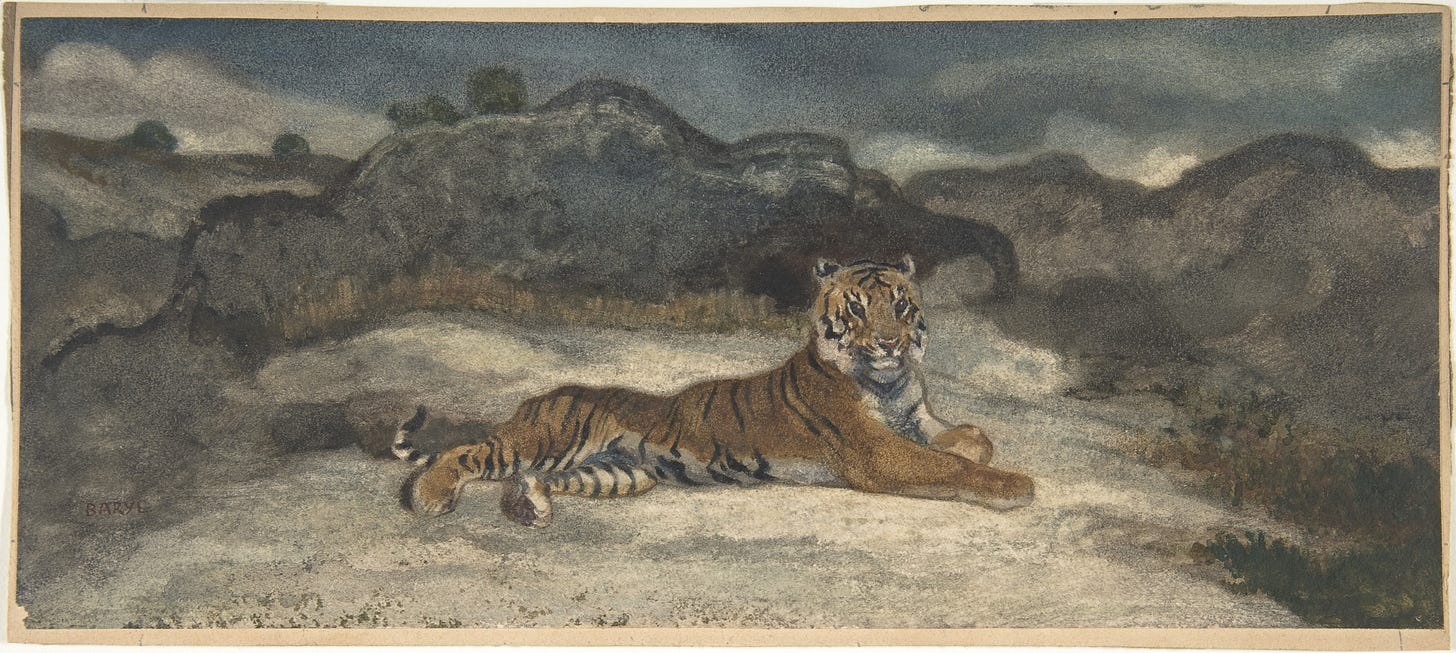
Still, this can be hard to sense at first.
Somebody does or says something terrible. The sun rises. Work happens. Our feeds refresh. And we think: maybe it wasn’t so serious. Maybe I was overreacting. Maybe this is how things are now. We might not dare to actually say those words to ourselves, but this is the sort of attrition that happens on a sensory level of reflex within us if we don’t notice the wider constellation.
We need our attention and awareness to realize and intervene in this. It takes noticing it, and then realizing it’s not the way we want to go. Only then can we stand there behind the waterfall and let our bodies develop new ways of sensing the world. We look for the light through those cracks and we let it touch us and infuse new energies. We let it into us and realize we are more than we thought.
Rabbit-Ducks and Why We’re Vulnerable
The idea of kaleidoscopic thinking rests on a simple but challenging fact: Anything can appear at least three different ways and everything looks slightly different from every angle. In other words, if you are familiar with Wittgenstein, everything is a rabbit-duck. We won’t go into it all here, but this following picture can show us the main idea. Look at it one way. You can see a rabbit. Look at it another way. You can see a duck. Now try and see both at once. That’s hard. But possible. And that’s the weird place behind the waterfall where you’re holding paradox, threshold visioning.
When a person does not know this is possible, they can be taken advantage of by someone (and armies of algorithms) who does know this is possible (overtly or not), because that person can switch everything in a move that is becoming common and even deliberate and still say ‘it was there all along’. A sudden switch to the other track will generate energy and attention, think of it as a prompt. The person goes very hard it one direction, then shifts and takes the other side. Now the’ve got both extremes working for them via the trick of continuance.
It can be hard in this to stop and ask about meaning and care. The arc of reality takes a while to hit, long enough that they’ve gotten a lot of momentum and power in the meantime so that when it does hit, people will question it. This is a sort of exploitation of the idea that you can usually find whatever you search for when you’ve been cleverly prompted (AIs actually demonstrate this).
Unless you have stepped behind the waterfall. Then it begins to look and feel very different. You start to be able to observe it and it no longer has a hold on you, no longer pushes and pulls you with its whims and ornaments.
Meanwhile, the play continues. You watch as other actors move fluidly between frames while those watching become dizzy, disoriented, unsure of what they actually saw, or willing to go with whatever everyone else thinks, which is often signaled through social media feeds that have been pushed towards the same scaffolding.
The algorithmic armies are always in place. They are not actually armies though, and they can be turned off with choice.
This vulnerability is magnified by the virtual worlds we now inhabit so much of the time. It’s already happening in a kaleidoscopic or constellatory way (think of the choices as arranged more like solar systems than straight lines), but we think it is still happening in a linear way, or we assume it must be linear (there must be an either/or), and that it must appear to everyone the same way it appears to us, when this is not the case.
We have to learn to do something like make that sensory shift that came in the dodging bullet scene the Matrix, or the Jen sword fight in Crouching Tiger, Hidden Dragon, where suddenly we felt like we could see and sense in more dimensions.
We think everyone has seen the news we have seen, but that is now less and less likely to be the case, as each feed is customized according to all each person has seen before and we have all walked different paths up to this present point. That is true is physical and geographical spaces, and in emotional and virtual spaces, too. So it becomes very easy to doubt or breed doubt. Unless you’re holding paradox.
In this way we end up with people who think some things are ‘so obvious’ and ‘so true’ that others have never heard of, and they blame one another for not knowing or seeing or sensing what is so obvious from this other point of view.
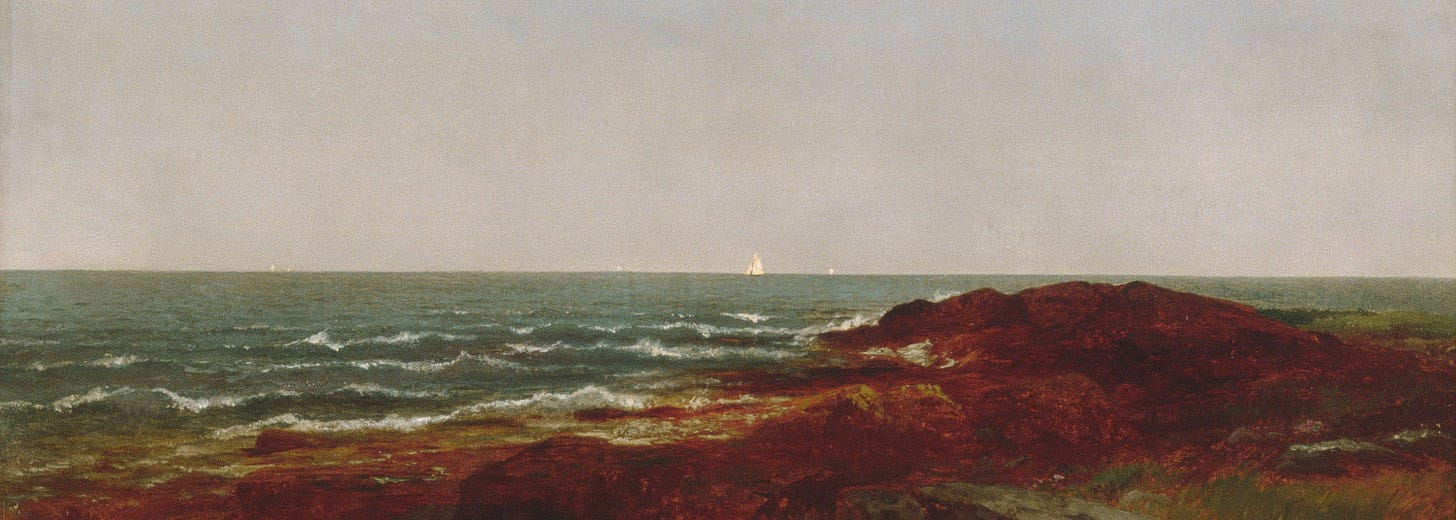
Because, in a way, all these people (so long as they are not purposively trying to hurt others) are right because they are speaking from the paths they have walked. The only way to shift it is to enter a multi-dimensional mindset that allows one to see how those different paths look differently to those walking them.
The truth is usually that they have been living in different ‘feeds’, as different pathways, and are coming from different directions.
When they try to explain their path or what is obvious from their experience to those who have very different paths or experiences, the response is often dramatic and hostile because of the mismatches and because of the hightened feeling that comes from the extreme disruption in which all this now take place.
These mismatches are the friction of the portal into another way of seeing, but in arguing or blaming, we miss that.
All it takes is noticing and practicing holding this in awareness. Which is a lot, frankly. It’s just really hard and it means becoming quite strong in ways that are hard to demonstrate. Still, if you know this—really know that this is happening and that perspectives are kaleidoscopic, if you really keep it in mind in your daily actions about yourself—it changes everything; you literally sense the world differently and in more detail than before. That’s the agency. And it’s sensually rich and worth it.
How can we help one another notice and develop this? How can we make this easier to do than it is right now?
I struggle with it, to be honest.
It’s hard to get outside of one’s own world, to keep in mind that there are so many other ways of entering into any idea. Luckily, the point is not to get out of ourselves or our worlds but to find better ways of holding them with whatever they seem not to match and in so doing, let the portal pull us through or at least let it give us a moment on the threshold to do some new visioning.
Our world is one world among many we have not yet experienced, but are here to share, and there is nothing more exciting once this is grasped.
Today it’s easy to assume that the way we experience the world, via our paths and especially via the information we receive, is the same way those around us are experiencing it.
When we notice that they act or say things that contradict our view, we either numb ourselves or push against it, because we’ve been taught that it’s either/or, a climb to the top.
That old mindset no longer works and the more we try to make it work, the harder it becomes to experience care, though love is still there, still holding us, even when we cannot feel it. Again, that’s the weird trick of continuance.
Different Paths to the Same Lake
From both sides of both sides of everything (which is actually a constellation of sides because there are never only two sides to anything), we are writing narratives that seem obvious to us and seem filled with facts but that to another person with another narrative might come off as infuriating or even crazy.
We feel and experience this often in the comments and emails I receive from the Love & Philosophy conversations. Some people are famous to one group and another has never heard of them. Some think one idea is crazy or infuriating while another says it has gotten them through the hardest times of their lives. All these experiences are real.
Every person comes into their beliefs and opinions in different ways, and can change those as they grow older. No one is right about everything. And there is always more than one path to the same lake, which also means that the lake is experienced differently.
Maybe I hiked through pine trees and you hiked through a desert to get to this lake we’re both now wading through. Maybe I’m used to the sun and you’re used to ice. The temperature will strike us differently. When we come together, if we assume there was only ever one path, we will fight about whether that path has pine trees or a desert, whether this is good weather or bad weather.
If we realize we came here from different paths, we can open one another to other worlds of experience. All that cool stuff you know about, you can now share with me creatively. And I can show you all the cool stuff I experienced. Then we both expand our worlds. And in so doing, new potentials are formed because we are putting stuff together that will surprise us.
Right now, we care so deeply about the pine trees or about the desert that we cannot bear it that another person is refusing to see them or to admit that they exist. So we’re missing out on the constellation thinking possible here.

It’s too hectic and too hard to take the time to realize another person walked a different path, or to try and explain what a pine tree or a desert might really be. This seems so obvious to us that we feel like an idiot when the other refuses to see it.
We could be expanding our understanding of the landscape by learning from these other paths, but instead we are staking our lives to changing the minds of others until they admit they saw what we saw on the path.
The trick of continuance is when they admit it. In that moment, a world is lost and we are less because of it. Because to admit they saw what we saw is to forget the uniqueness of their path and to take on what was not their own.
Pain comes when we feel attacked. Pain comes when we feel humiliated. And people want to be right in order to defend themselves and not to feel humiliated. But the same is true when we give up and give in, even when we know in our heart we have had a unique experience. We’re here to share that unique path. But we have to do it without thinking its the only one, or that it requires ‘winning’ against what’s different.
The Practice of Noticing: A Portal Opens
I’ve come to think of noticing as a sort of tending to life, a way to realize how much more is going on than our senses register. I find this can help cultivate care if done in a spirit that has dropped the cloak of judgement. This sounds simple but is extraordinarily challenging—and it starts in the smallest moments.
When we can hold the paradox in these small moments, we open a portal into kaleidoscopic thinking. We don’t just survive discomfort, we access multiple layers of reality simultaneously. Let me give a little example.
Yesterday, my husband and I were walking and we saw something beautiful growing on a rusty metal enclosure. I called it a moss. He believed it was a lichen…
Keep reading with a 7-day free trial
Subscribe to Waymaking to keep reading this post and get 7 days of free access to the full post archives.




